Rao Anwer
MATRIX: Multimodal Agent Tuning for Robust Tool-Use Reasoning
Oct 09, 2025Abstract:Vision language models (VLMs) are increasingly deployed as controllers with access to external tools for complex reasoning and decision-making, yet their effectiveness remains limited by the scarcity of high-quality multimodal trajectories and the cost of manual annotation. We address this challenge with a vision-centric agent tuning framework that automatically synthesizes multimodal trajectories, generates step-wise preference pairs, and trains a VLM controller for robust tool-use reasoning. Our pipeline first constructs M-TRACE, a large-scale dataset of 28.5K multimodal tasks with 177K verified trajectories, enabling imitation-based trajectory tuning. Building on this, we develop MATRIX Agent, a controller finetuned on M-TRACE for step-wise tool reasoning. To achieve finer alignment, we further introduce Pref-X, a set of 11K automatically generated preference pairs, and optimize MATRIX on it via step-wise preference learning. Across three benchmarks, Agent-X, GTA, and GAIA, MATRIX consistently surpasses both open- and closed-source VLMs, demonstrating scalable and effective multimodal tool use. Our data and code is avaliable at https://github.com/mbzuai-oryx/MATRIX.
How Good are Foundation Models in Step-by-Step Embodied Reasoning?
Sep 18, 2025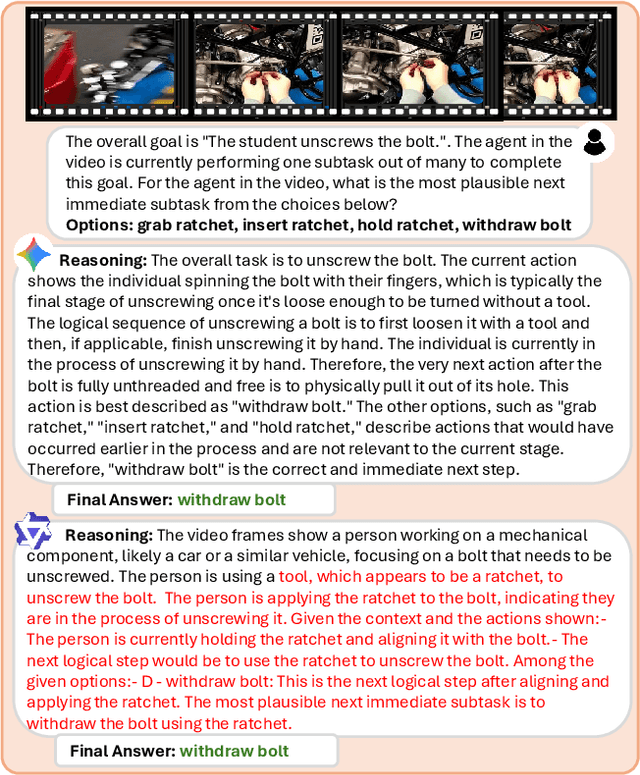
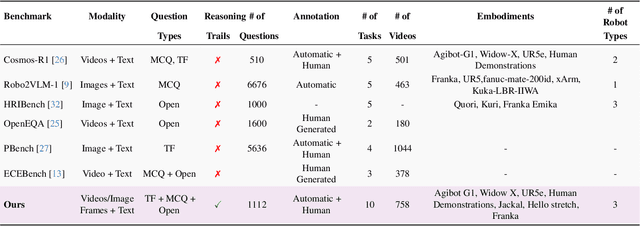
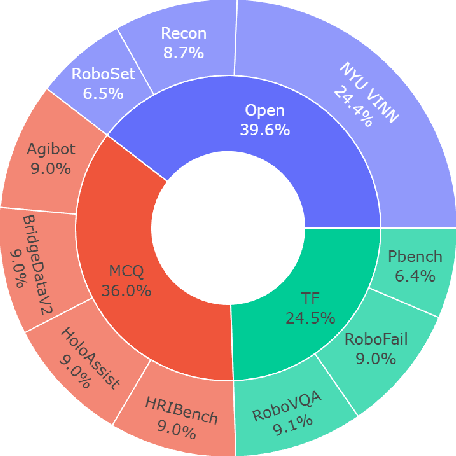
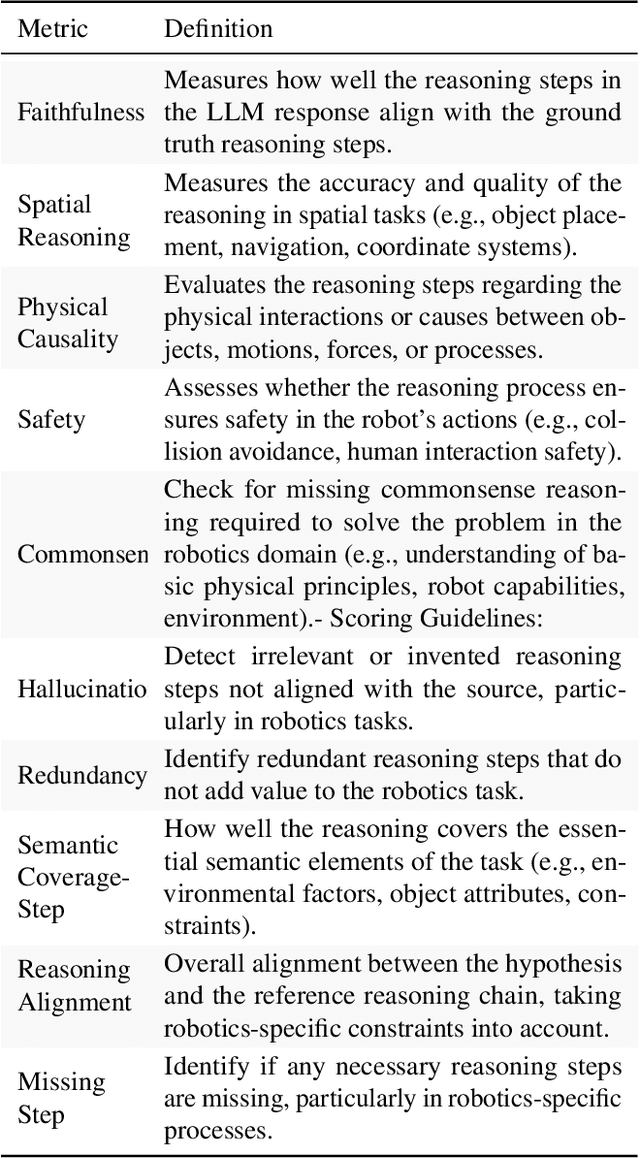
Abstract:Embodied agents operating in the physical world must make decisions that are not only effective but also safe, spatially coherent, and grounded in context. While recent advances in large multimodal models (LMMs) have shown promising capabilities in visual understanding and language generation, their ability to perform structured reasoning for real-world embodied tasks remains underexplored. In this work, we aim to understand how well foundation models can perform step-by-step reasoning in embodied environments. To this end, we propose the Foundation Model Embodied Reasoning (FoMER) benchmark, designed to evaluate the reasoning capabilities of LMMs in complex embodied decision-making scenarios. Our benchmark spans a diverse set of tasks that require agents to interpret multimodal observations, reason about physical constraints and safety, and generate valid next actions in natural language. We present (i) a large-scale, curated suite of embodied reasoning tasks, (ii) a novel evaluation framework that disentangles perceptual grounding from action reasoning, and (iii) empirical analysis of several leading LMMs under this setting. Our benchmark includes over 1.1k samples with detailed step-by-step reasoning across 10 tasks and 8 embodiments, covering three different robot types. Our results highlight both the potential and current limitations of LMMs in embodied reasoning, pointing towards key challenges and opportunities for future research in robot intelligence. Our data and code will be made publicly available.
BiMediX2: Bio-Medical EXpert LMM for Diverse Medical Modalities
Dec 10, 2024



Abstract:This paper introduces BiMediX2, a bilingual (Arabic-English) Bio-Medical EXpert Large Multimodal Model (LMM) with a unified architecture that integrates text and visual modalities, enabling advanced image understanding and medical applications. BiMediX2 leverages the Llama3.1 architecture and integrates text and visual capabilities to facilitate seamless interactions in both English and Arabic, supporting text-based inputs and multi-turn conversations involving medical images. The model is trained on an extensive bilingual healthcare dataset consisting of 1.6M samples of diverse medical interactions for both text and image modalities, mixed in Arabic and English. We also propose the first bilingual GPT-4o based medical LMM benchmark named BiMed-MBench. BiMediX2 is benchmarked on both text-based and image-based tasks, achieving state-of-the-art performance across several medical benchmarks. It outperforms recent state-of-the-art models in medical LLM evaluation benchmarks. Our model also sets a new benchmark in multimodal medical evaluations with over 9% improvement in English and over 20% in Arabic evaluations. Additionally, it surpasses GPT-4 by around 9% in UPHILL factual accuracy evaluations and excels in various medical Visual Question Answering, Report Generation, and Report Summarization tasks. The project page including source code and the trained model, is available at https://github.com/mbzuai-oryx/BiMediX2.
CONDA: Condensed Deep Association Learning for Co-Salient Object Detection
Sep 04, 2024
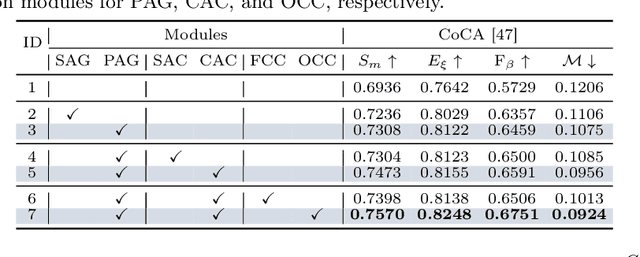
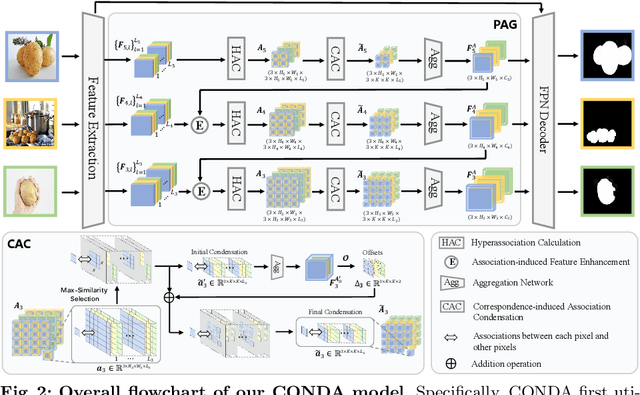
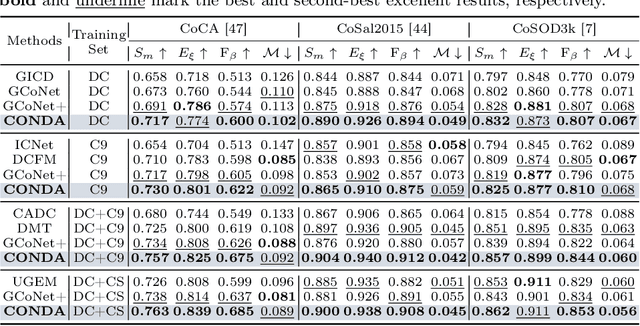
Abstract:Inter-image association modeling is crucial for co-salient object detection. Despite satisfactory performance, previous methods still have limitations on sufficient inter-image association modeling. Because most of them focus on image feature optimization under the guidance of heuristically calculated raw inter-image associations. They directly rely on raw associations which are not reliable in complex scenarios, and their image feature optimization approach is not explicit for inter-image association modeling. To alleviate these limitations, this paper proposes a deep association learning strategy that deploys deep networks on raw associations to explicitly transform them into deep association features. Specifically, we first create hyperassociations to collect dense pixel-pair-wise raw associations and then deploys deep aggregation networks on them. We design a progressive association generation module for this purpose with additional enhancement of the hyperassociation calculation. More importantly, we propose a correspondence-induced association condensation module that introduces a pretext task, i.e. semantic correspondence estimation, to condense the hyperassociations for computational burden reduction and noise elimination. We also design an object-aware cycle consistency loss for high-quality correspondence estimations. Experimental results in three benchmark datasets demonstrate the remarkable effectiveness of our proposed method with various training settings.
* There is an error. In Sec 4.1, the number of images in some dataset is incorrect and needs to be revised
Surface-biased Multi-Level Context 3D Object Detection
Feb 13, 2023



Abstract:Object detection in 3D point clouds is a crucial task in a range of computer vision applications including robotics, autonomous cars, and augmented reality. This work addresses the object detection task in 3D point clouds using a highly efficient, surface-biased, feature extraction method (wang2022rbgnet), that also captures contextual cues on multiple levels. We propose a 3D object detector that extracts accurate feature representations of object candidates and leverages self-attention on point patches, object candidates, and on the global scene in 3D scene. Self-attention is proven to be effective in encoding correlation information in 3D point clouds by (xie2020mlcvnet). While other 3D detectors focus on enhancing point cloud feature extraction by selectively obtaining more meaningful local features (wang2022rbgnet) where contextual information is overlooked. To this end, the proposed architecture uses ray-based surface-biased feature extraction and multi-level context encoding to outperform the state-of-the-art 3D object detector. In this work, 3D detection experiments are performed on scenes from the ScanNet dataset whereby the self-attention modules are introduced one after the other to isolate the effect of self-attention at each level.
On the Robustness of 3D Object Detectors
Jul 20, 2022


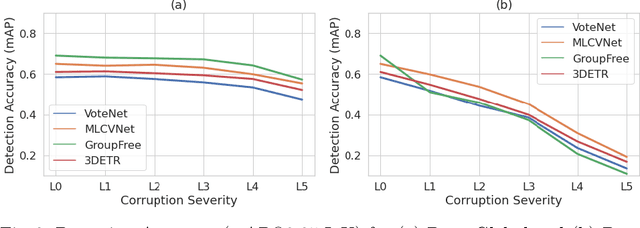
Abstract:In recent years, significant progress has been achieved for 3D object detection on point clouds thanks to the advances in 3D data collection and deep learning techniques. Nevertheless, 3D scenes exhibit a lot of variations and are prone to sensor inaccuracies as well as information loss during pre-processing. Thus, it is crucial to design techniques that are robust against these variations. This requires a detailed analysis and understanding of the effect of such variations. This work aims to analyze and benchmark popular point-based 3D object detectors against several data corruptions. To the best of our knowledge, we are the first to investigate the robustness of point-based 3D object detectors. To this end, we design and evaluate corruptions that involve data addition, reduction, and alteration. We further study the robustness of different modules against local and global variations. Our experimental results reveal several intriguing findings. For instance, we show that methods that integrate Transformers at a patch or object level lead to increased robustness, compared to using Transformers at the point level.
 Add to Chrome
Add to Chrome Add to Firefox
Add to Firefox Add to Edge
Add to Edge